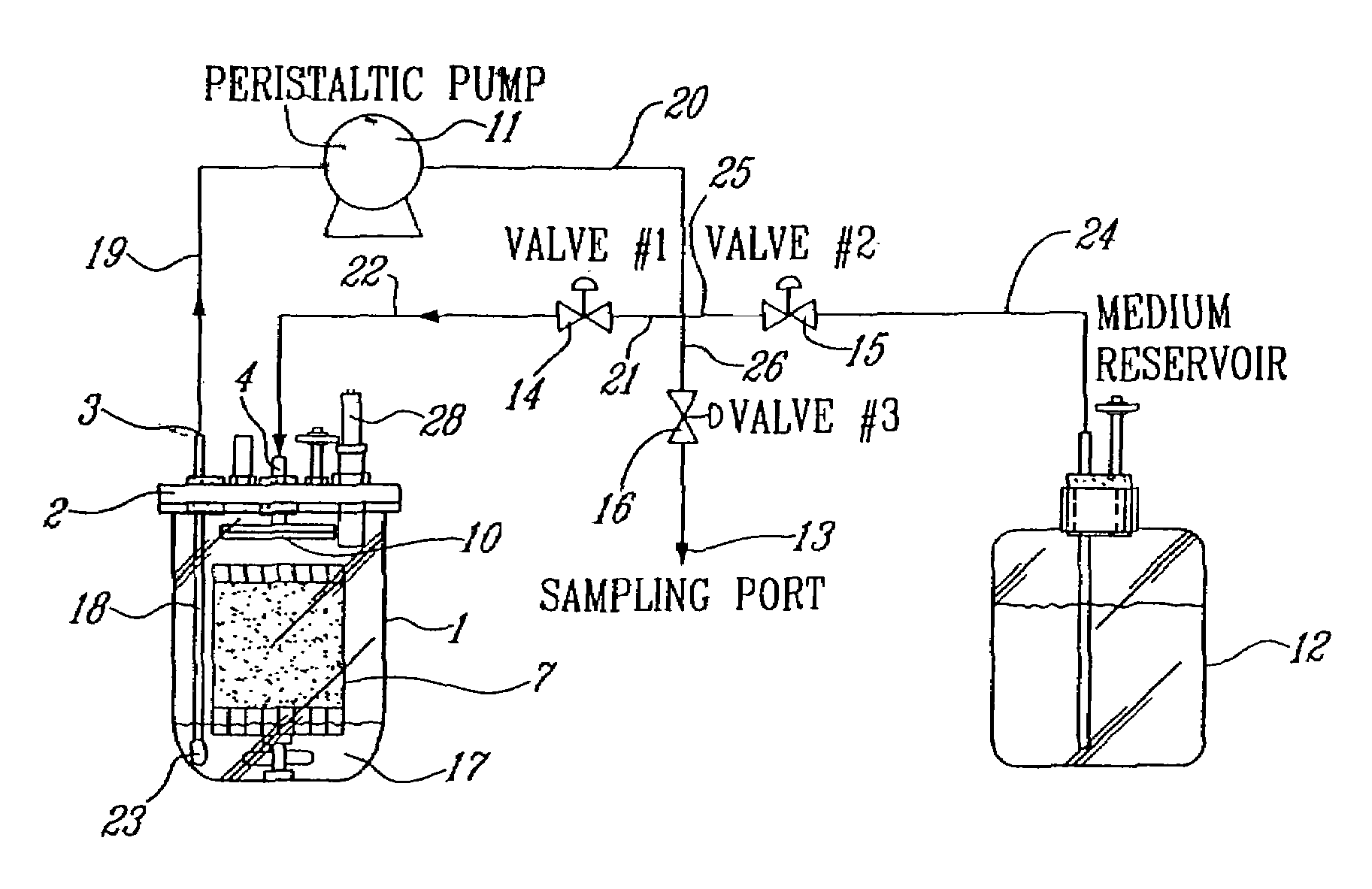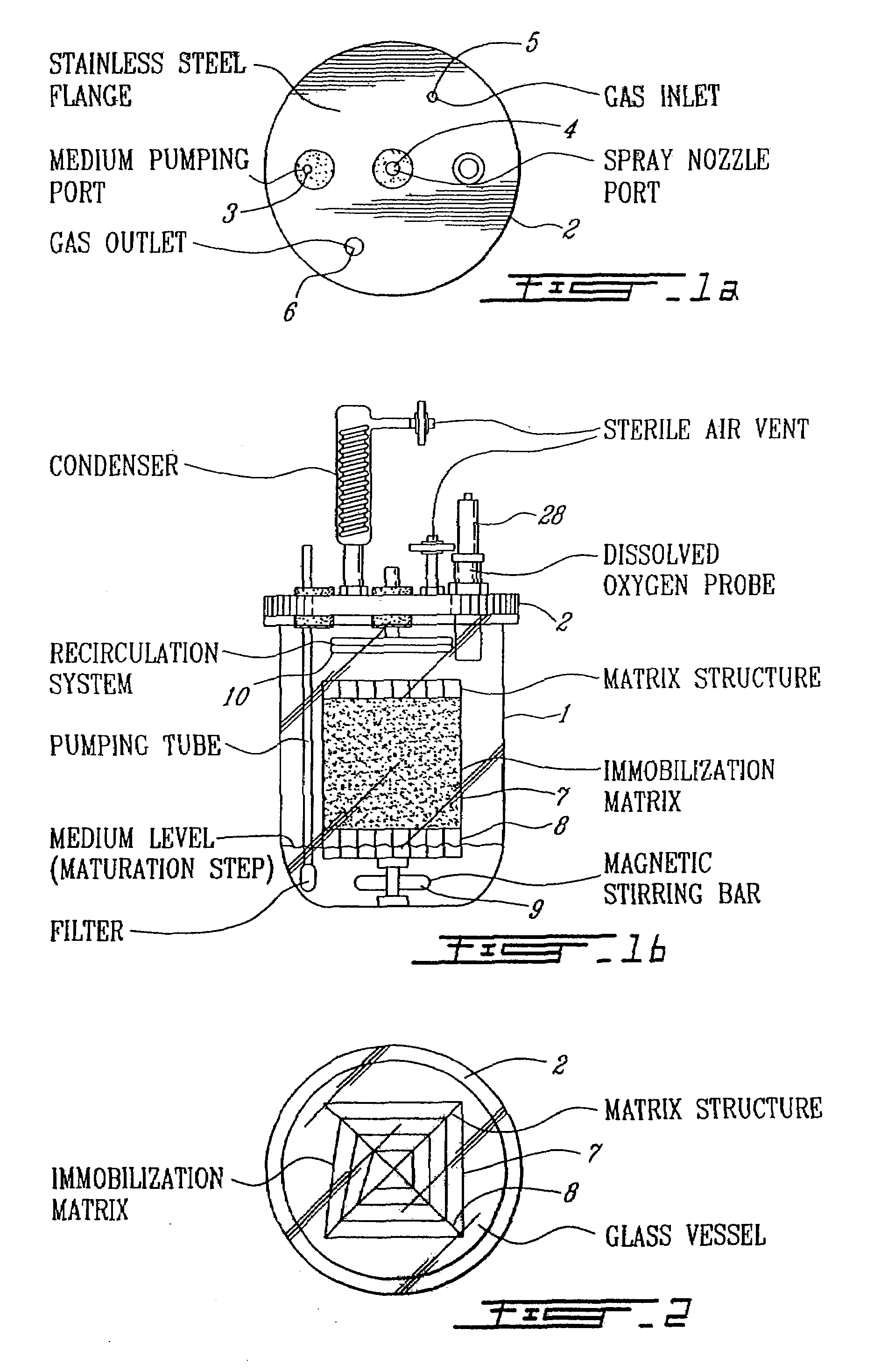Scalable bioreactor culture process and system for the maturation of conifer somatic embryos
a bioreactor and embryo technology, applied in the field of scalable bioreactor culture process and system for the maturation can solve the problems of lack of synchrony, limited knowledge about this complex differentiation process, and inability to industrialize the production of conifer somatic embryos in bioreactors
- Summary
- Abstract
- Description
- Claims
- Application Information
AI Technical Summary
Benefits of technology
Problems solved by technology
Method used
Image
Examples
example 1
[0064]A suspension of embryogenic tissues of white spruce (Picea glauca) was used as inoculum. These cultures were grown in 250 mL (milliliter) flasks containing a volume of 50 mL of suspension agitated at a speed of 90 rpm (revolutions per minute) under continuous light. The liquid culture medium used in maintenance phase is described in the above table 2. Three maintenance flasks grown for 6 days were harvested under sterile conditions for inoculation of the bioreactor. The filtered biomass was rinsed three times with a solution of sucrose (6%) to eliminate the presence of growth regulators (2,4-D) adversely affecting the development of somatic embryos. The biomass was then concentrated into a minimal volume and added to the bioreactor. A mass of 13 grams of humid biomass was inoculated under the form of a suspension, diluted in 2 L of culture medium which allowed total immersion of the immobilization matrix. The suspension was then gently agitated by means of a magnetic stirring ...
example 2
[0065]A second culture was inoculated following the procedure of Example 1. A mass of 13 grams of humid biomass of Picea glauca was used for inoculating the bioreactor. The liquid medium recirculation and spraying equipment was the same as described in Example 1. The irrigation frequency was 4 minutes every 2 hours at a flow rate of 40 cc / min. A mixture of air and nitrogen was supplied to the bioreactor at a flow rate of 25 cc / min in order to obtain an oxygen concentration of 4.2%. This concentration of oxygen corresponds to 20% of the normal concentration of oxygen in air and, according to numerous publications, promotes development of somatic embryos versus growth of non embryogenic biomass. The 200 mL medium contained in the bioreactor was periodically replenished with 4 volumes of 100 mL of fresh medium during the 7 weeks of maturation. At harvest, a mass of 101 grams of humid biomass was collected, which corresponded to 12 000 mature somatic embryos (12 000 SE·L−1) of which mor...
example 3
[0066]An liquid medium recirculation and spraying equipment of the “shower” type was used to obtain a more homogeneous irrigation. Drops of the liquid culture medium were randomly dispersed on the structure supporting the matrix. A mass of 12 grams of humid biomass (Picea glauca) from three flasks of maintenance culture of embryogenic tissues were used. Air was supplied at a flow rate of 25 cc / min during the first week of culture to promote development of the biomass and thereby increase the surface of the matrix covered with biomass. During the five last weeks of culture, a mixture of nitrogen and air was supplied to the bioreactor at a flow rate of 25 cc / min; the oxygen concentration of this mixture was 4.2% to promote maturation of the embryos. The automatic liquid medium recirculation and spraying equipment was operated during 4 minutes every 30 minutes at a flow rate of 80 cc / min, and the 200 mL medium contained in the bioreactor was periodically replenished with 5 volumes of 1...
PUM
| Property | Measurement | Unit |
|---|---|---|
| concentration | aaaaa | aaaaa |
| concentration | aaaaa | aaaaa |
| flow rate | aaaaa | aaaaa |
Abstract
Description
Claims
Application Information
 Login to View More
Login to View More - R&D
- Intellectual Property
- Life Sciences
- Materials
- Tech Scout
- Unparalleled Data Quality
- Higher Quality Content
- 60% Fewer Hallucinations
Browse by: Latest US Patents, China's latest patents, Technical Efficacy Thesaurus, Application Domain, Technology Topic, Popular Technical Reports.
© 2025 PatSnap. All rights reserved.Legal|Privacy policy|Modern Slavery Act Transparency Statement|Sitemap|About US| Contact US: help@patsnap.com



